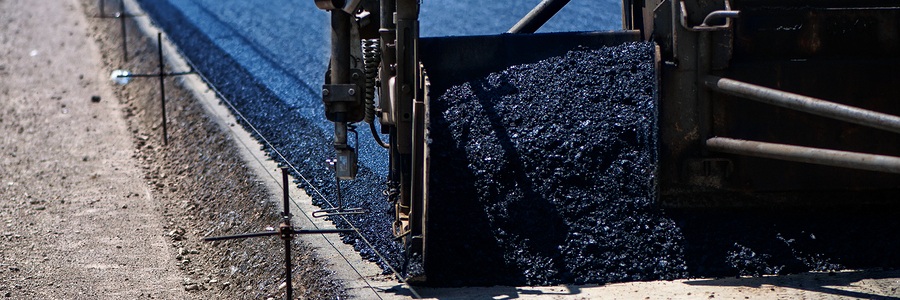Asphalt bitumen is a binding organic material made from the by-products of refined crude oil. It is used in road construction because it is easy to produce, reusable, non-toxic, and a strong binder.
Production
Crude oil is refined through a distillation process that heats up the oil in a large tank and collects the vapors that are produced at varying temperatures.
Crude oil has a high concentration of hydrocarbons which are highly combustible. Hydrocarbons are an organic material that is made from a bond between hydrogen and carbon. The primary products produced from the refining of crude oil include diesel, gasoline, and other high octane fuels. Once fuels, motor oils, and solvents have been refined out of the crude oil a tar mixture is left.
The tar mixture left over from the distillation process consists of residual hydrocarbons and a high concentration of organic material, bitumen. The solution is refined further to make road construction bitumen, and other compounds used for construction materials like roof shingles, flashing, and sealants.
Melting Point
Bitumen has a melting point of around 240 degrees Fahrenheit which is high enough to be safely used for roadway designs and low enough to be heated up without using a large amount of energy. In some parts of the world, temperatures can rise to a point that will turn the substance viscous, but because of the layers of aggregate rock, roadways can still endure high temperatures without contorting.
Recycling
Because of the low melting point of asphalt bitumen, it is easy to heat the asphalt up as part of an asphalt recycling process. Asphalt torn up from old roadways will be sent to an asphalt processing plant instead of to the landfill. At the asphalt plant, the torn up asphalt will be ground up to create an easy to measure mixture, and it can then be added to recycled roadway mix designs. The old asphalt material is mixed in with new bitumen and fresh aggregate rock to make a just as strong asphalt material.
Chemical Composition
Asphalt bitumen is non-toxic and is comprised of hydrocarbons and organic material with a high molecular density. These hydrocarbons are adhesive and form strong bonds with solid surfaces when at a low temperature. Crude oil deposits are formed when organic carbon material decays. The oil deposits on earth are formed from organic life and plant material that existed during the prehistoric and Jurassic era.
Colored Bitumen
Traditional asphalt bitumen is black because of the dense organic material that makes up the material. Colored bitumen is also available and has pigments added to the solution. It is more expensive than regular asphalt bitumen because there is less of its pigmentable counterpart produced during crude oil distillation, and it requires more materials and chemical additives to make.







